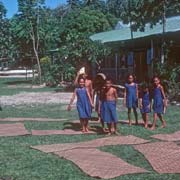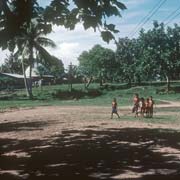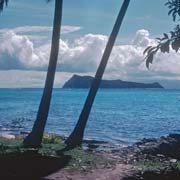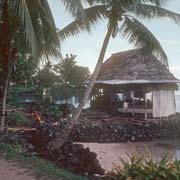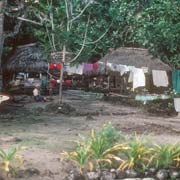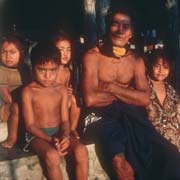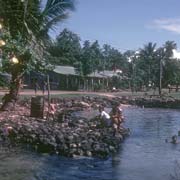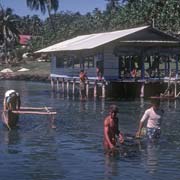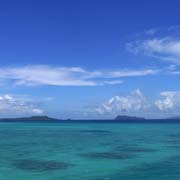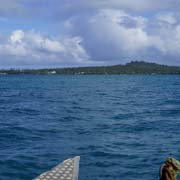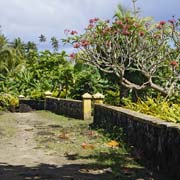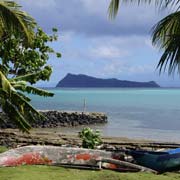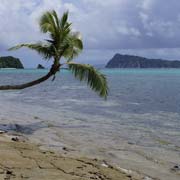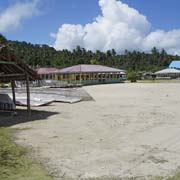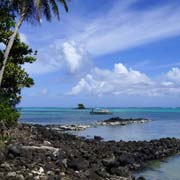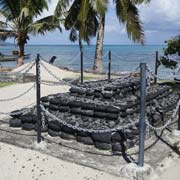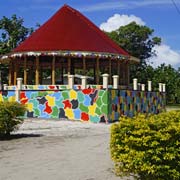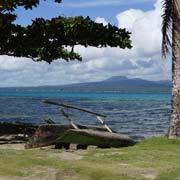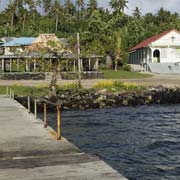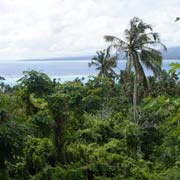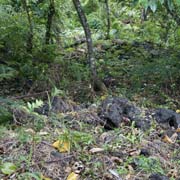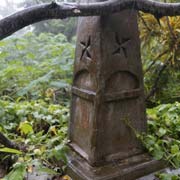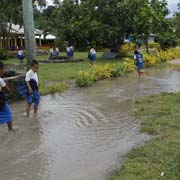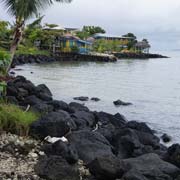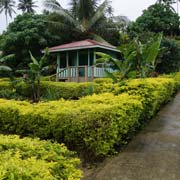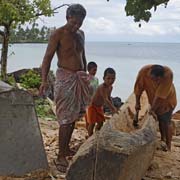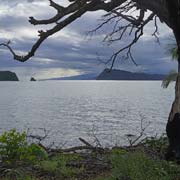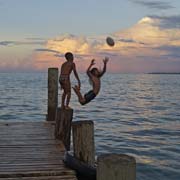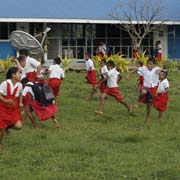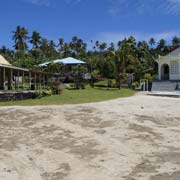Photos of Manono, a quiet little island, Samoa
Manono, a quiet little Island
The tiny island of Manono, only about 3.4 kilometres off the western coast of Upolu in Apolima Strait, can be reached by small motor boat from the village of Manono Uta on Upolu. It has an area of only 3 km² and a population of almost 900 people that live in four villages around the island.
you may then send it as a postcard if you wish.
There are no roads or cars; a foot path circles the island and it is a very peaceful place: there are no dogs allowed here. Off the western coast is Nu'ulopa, a tiny uninhabited islet and a nice view of the island of Apolima.
The village of Salua in the north has a jetty and it is there that most boats arrive. The only Primary School on the island is there too and there is a small shop as well. The other villages are Apai, on the west coast, Lepuia'i in the south west and Faleu in the south, the largest village with over 350 inhabitants, although it is hard to see where one village ends and the other begins. There are two organised tourist accommodations: "Sunset View Fales" near Lepuia'i and "The Sweet Escape" near Faleu; not many tourists come here, though.
The highest point on Manono is 110 metre high Mount Tulimanuiva where a "star mound" can be found; these stone mounds date back to late prehistory and it is generally thought that they were used for the snaring of pigeons, which used to be an important sport for chiefs; the structures have ray-like projections and can be found all over Samoa. Nearby is a small monument on the grave of Afutiti, a chief who was buried standing up on the highest point to guard the island.



